New Trek Domane+ SLR e-bike is lightweight, quiet and looks just like the regular version
Trek's first true performance e-road bike weighs just 11.8kg and shares the same frame material and design attributes as the standard Domane SLR
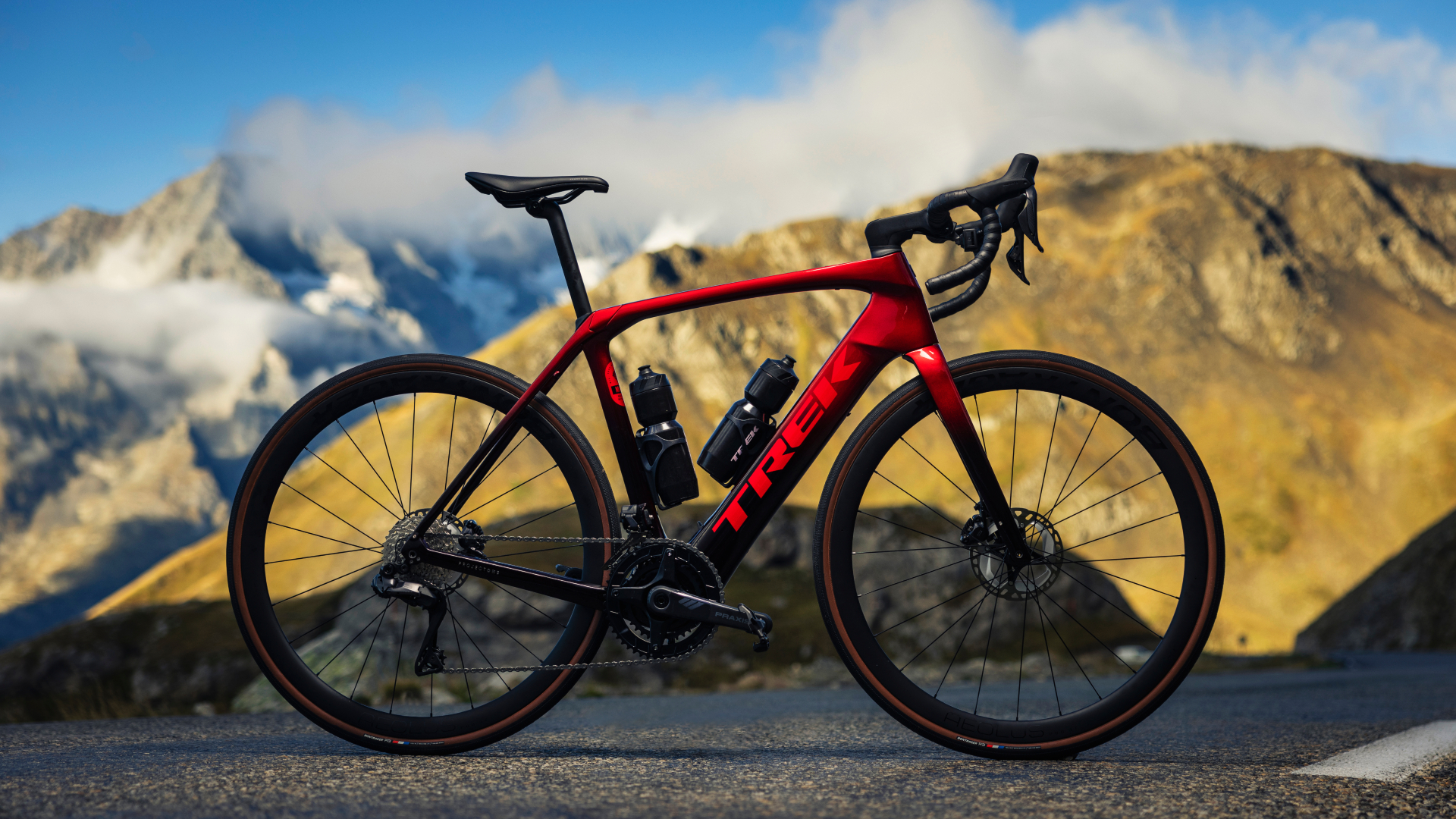
Trek has released the Domane+ SLR, its first true performance e-road bike.
The Wisconsin-based brand says it delivers “an unprecedented speed to weight ratio”, with the top-tier model weighing 11.8kg/26lb and providing a maximum assist of 28mph in the US and 15.5mph/25km/h in Europe.
If the holy grail for the best electric road bikes, or at least the path to greater acceptance, is to appear largely indistinguishable from regular road bikes, then Trek has seemingly made up serious ground with the Domane+ SLR.
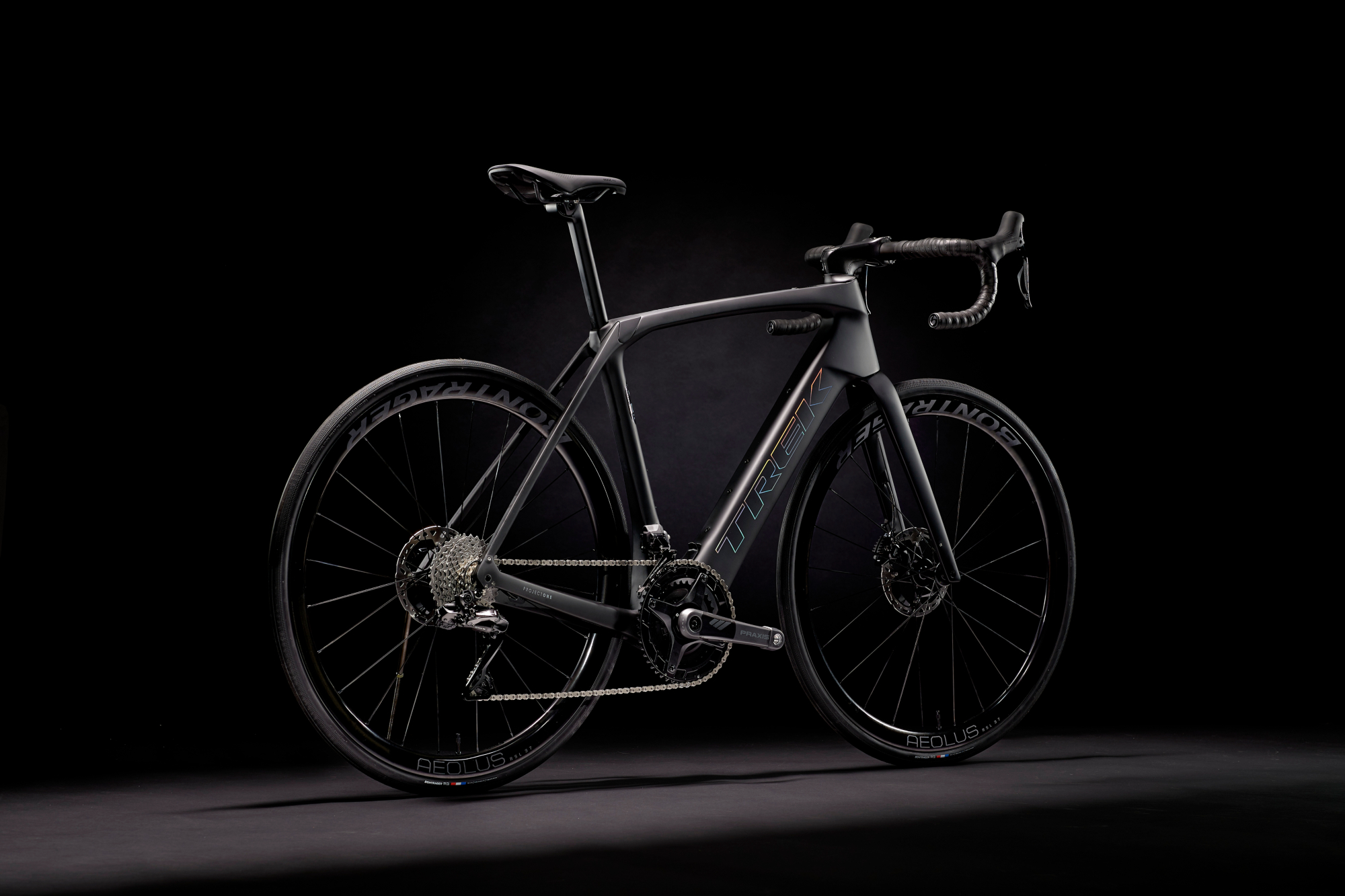
First impressions are that it looks a lot like, well, the new Domane SLR, released just last month. Taking a cursory glance perhaps the only give away is a beefier downtube - where the 360Wh battery is stored - and even then it has the appearance of a tube shaped for aerodynamic advantage rather than one made bigger so it can hide a battery.
If it closely resembles the latest Domane, that’s because it shares many of its attributes. Trek deemed the Domane “the perfect chassis” for a performance e-road bike thanks to its versatility and “rider-friendly” features. The Domane+ SLR is made using Trek’s premium 8000 Series OCLV carbon, as is the regular SLR, which contributes to the bike’s impressively low weight; even in its heaviest configuration (based on 56cm frame size) the Domane only weighs 12.6kg or just a shade under 28lb.
It features Trek’s endurance geometry, which means a taller head tube and a longer wheelbase, just like on the regular Domane. The updated rear IsoSpeed technology, here to help reduce road chatter and make for a smoother ride over longer distances, remains as does the RCS integrated stem system. Likewise, the electric Domane has mudguard mounts, making it winter-ready and commuter-friendly.
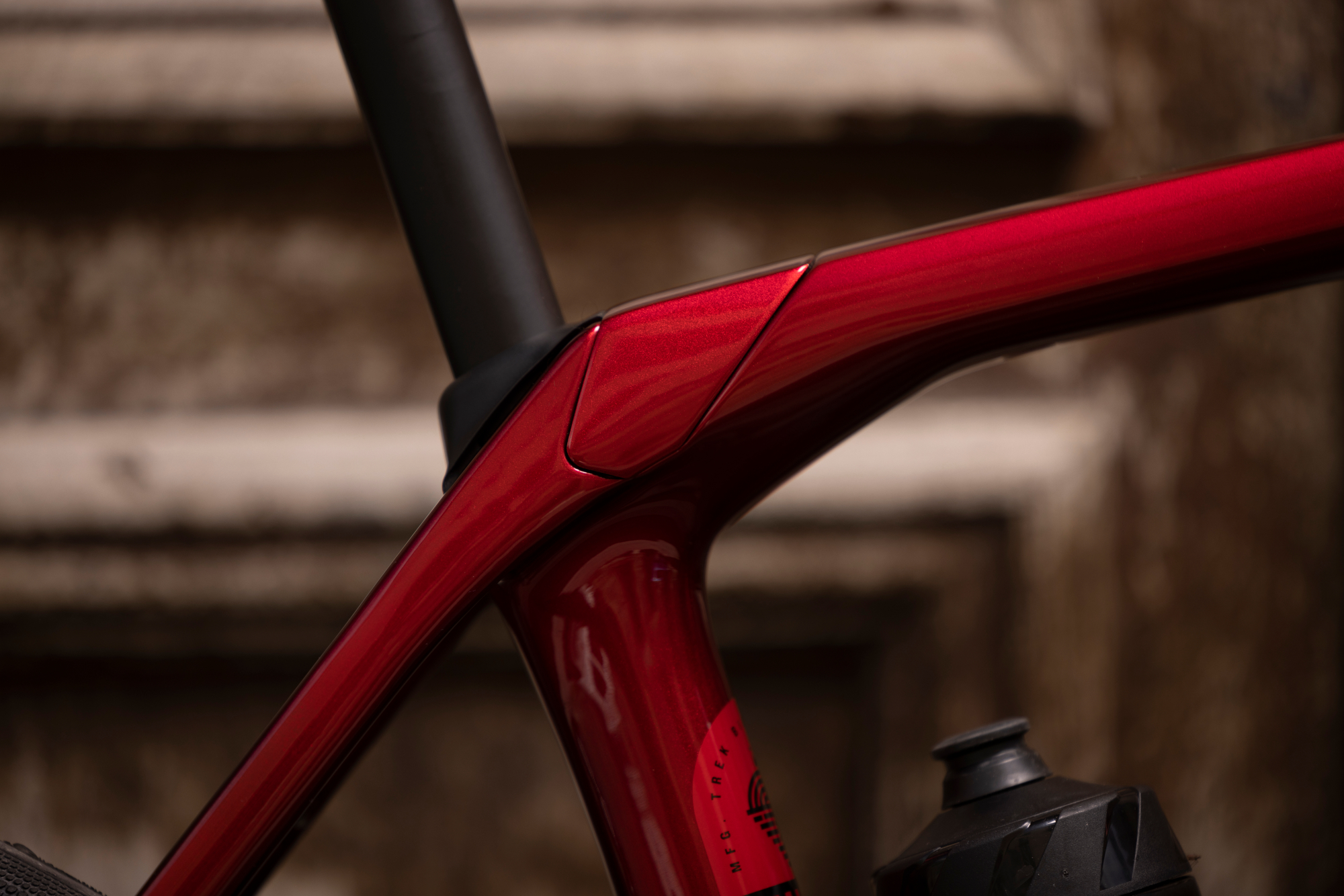
Making the Domane+ SLR feel like a regular road bike is another part of the puzzle, which if solved will likely lead to yet more converts. Alongside the frame material and design attributes ‘borrowed’ from the ‘acoustic’ Domane, Trek have also managed to equip the electric version with what it describes as a “close to standard Q factor” - the distance between the pedals attachment points on the crank arms. It measures 163mm and is possible to the compact nature of the Domane+ SLR’s chosen motor.
And it’s this motor which is likely to garner much attention and draw many plaudits. While there are plenty of roadies who will appreciate the Domane+ SLR’s aesthetics, no one buys an e-road bike for this attribute alone; call it what you will, a helping hand or an additional boost, but it’s the extra assistance up the hills, into a headwind or just so you can ride further and keep up with friends that are an e-road bike's biggest selling point.
Trek has equipped the Domane+ SLR with a TQ battery and motor. At 3,900 grams it’s the lightest system currently available. The motor delivers up to 300 watts of assist, and 50 Nm of torque, while the 360 Wh battery should provide a range of around 60 miles, though this will vary based on assist level, rider weight, terrain and other variables.
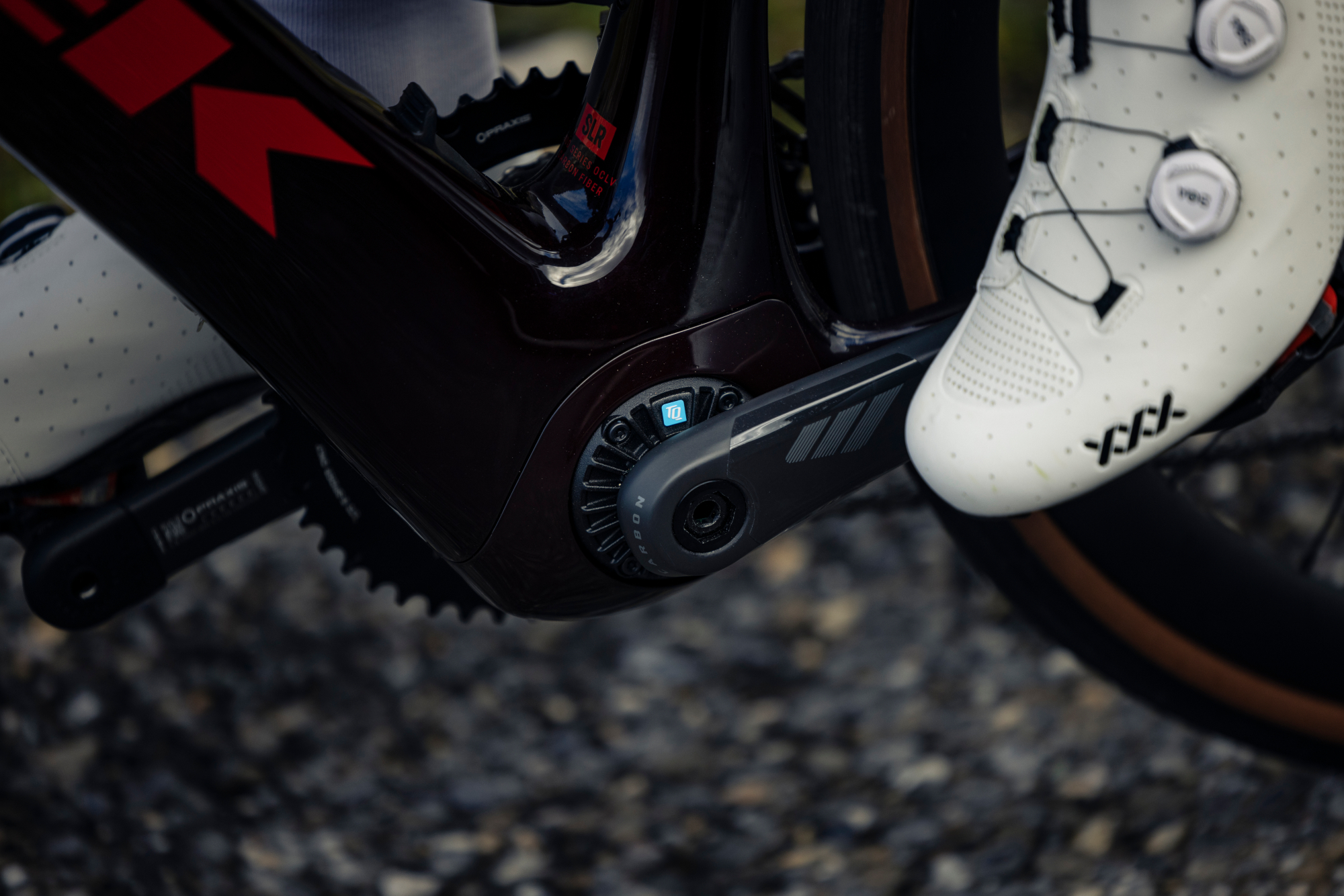
TQ, a German brand, also claims its system is the quietest out there. Unlike the majority of e-bike motors the HPR50 uses a harmonic drive transmission rather than gears or belts to transmit power. Trek claim that its “twice as quiet as previous Trek ebikes”, with ambient wind noise said to cancel out any sound from the motor. If proven, it’s another feather in the Domane+ SLR’s cap, helping it yet further in its quest to blend seamlessly into the pack.
So what is a harmonic drive transmission? Its complexities are both hard to understand and difficult to translate unless you’re an engineer. Which I’m most certainly not. But here goes anyway.
All e-bike motors require a mechanism to help them achieve the correct reduction ratio due to the fact that the motor is spinning at far higher cadence than the rider's legs, thus requiring a reduction ratio between the two disparate RPMs.
Most systems use the aforementioned planetary gears to achieve this ratio. It’s a system of several cogs and therefore several steps. However, TQ’s patented Harmonic Pin Ring Technology achieves the ratio in just one step using an inner spline ring and an outer spline ring. Here’s where it gets a little murky. The outer spline has more teeth than the inner spline. On top of this the two rings spin at different speeds. The result creates the proper reduction ratio. Clear as mud?
Perhaps all we need to know as cyclists is that the reduction in parts makes for a reportedly lighter, smaller and quieter motor. Looking at the bottom bracket of the Domane+ SLR it's barely discernible.

The 360Wh battery can be backed up with a Range Extender. Weighing just 26oz or 950 grams, it sits in the bottle cage and delivers an additional 160Wh or roughly an additional 40% of range. That it apparently only takes an hour to charge is another bonus.
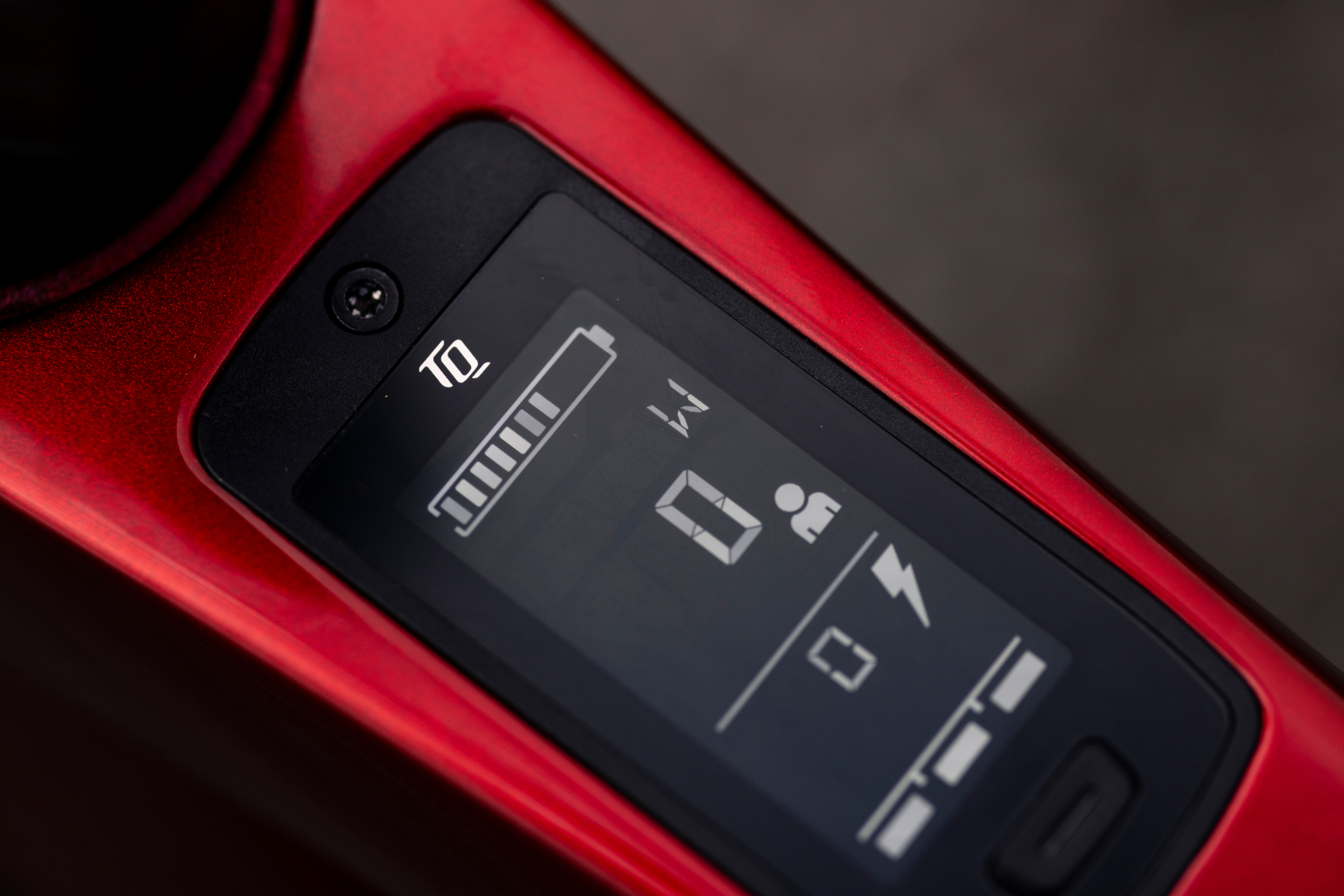
The bike features three assist modes: Eco, Mid and High, with the latter delivering those top end numbers of 50 Nm of torque and 300 watts of power. Changing between modes should feel natural to most road bike users given that the buttons are mounted to the shifters. There’s also a top tube LED display, which transmits range, speed and battery life at all times. Additionally, both the Trek Central and TQ apps allow riders to customise the assist behaviour.
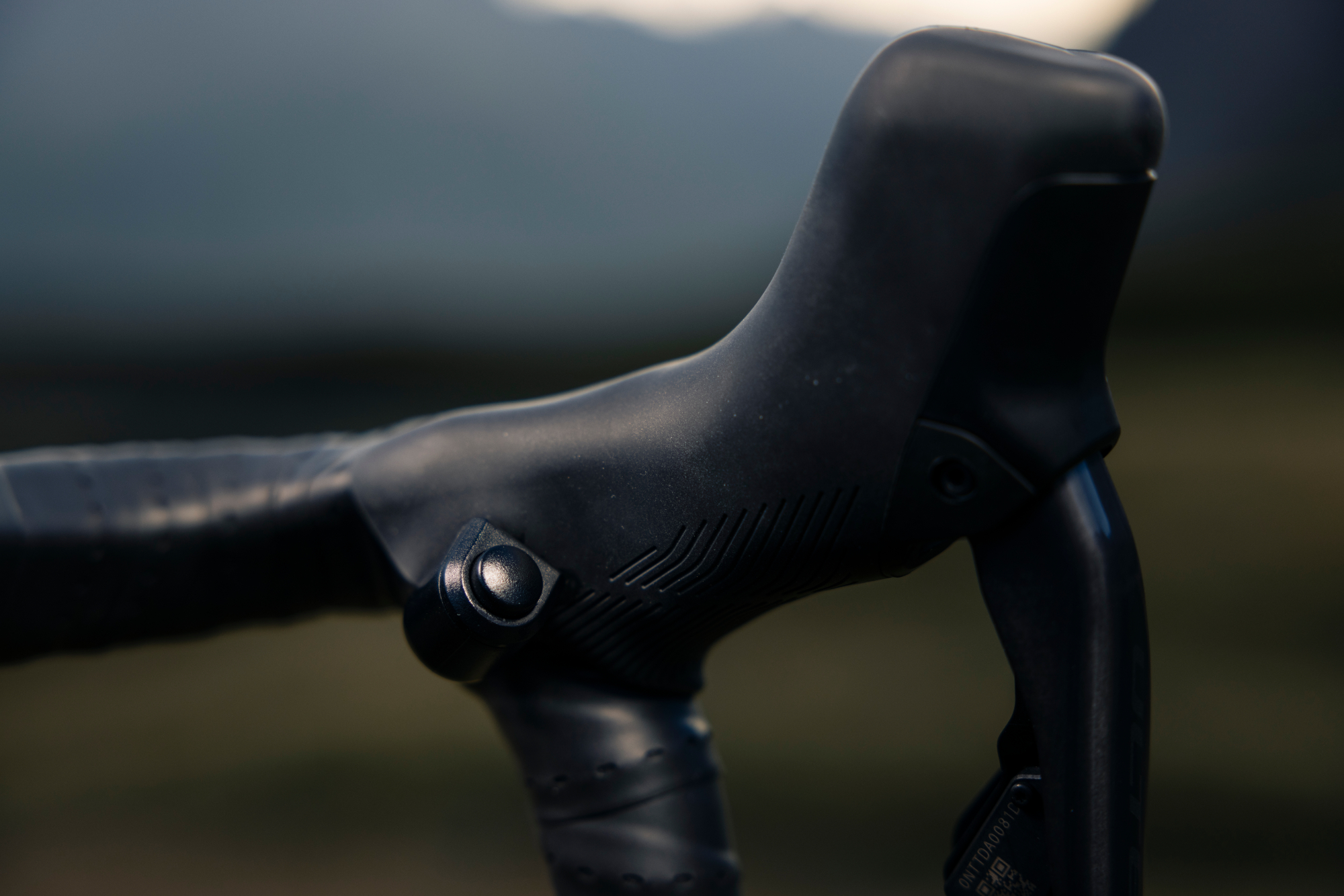
Motor aside, the Domane+ SLR also differs from its traditional counterpart in tyre clearance. Here there’s an additional 2mm, taking it to 40mm, or 35mm with mudguards. Perhaps due to this increased room, Trek is offering the electric Domane in both ‘road’ and ‘light gravel’ specs. The road bikes use Shimano’s 2x electronic groupsets and 32mm tyres, while the 'gravel' offering relies on SRAM’s 1x eTap groupsets and 40mm rubber. Both Shimano and SRAM-equipped bikes use Praxxis carbon crank arms.
The Domane+ line-up starts with the SLR 6, which features either Shimano 105 Di2 or SRAM RIval eTap AXS groupsets alongside Bontrager Aeolus Pro 37 and 3V carbon wheels. The next rung up is the SLR 7, which sees the groupsets upgraded to Ultegra Di2 and Force eTap AXS. The top-tier SLR 9 - sees the groupsets complete their ascension, with Dura-Ace Di2 and Red eTap AXS featuring alongside Aeolus RSL 37 and 37v carbon hoops. All wheelsets are tubeless-ready.
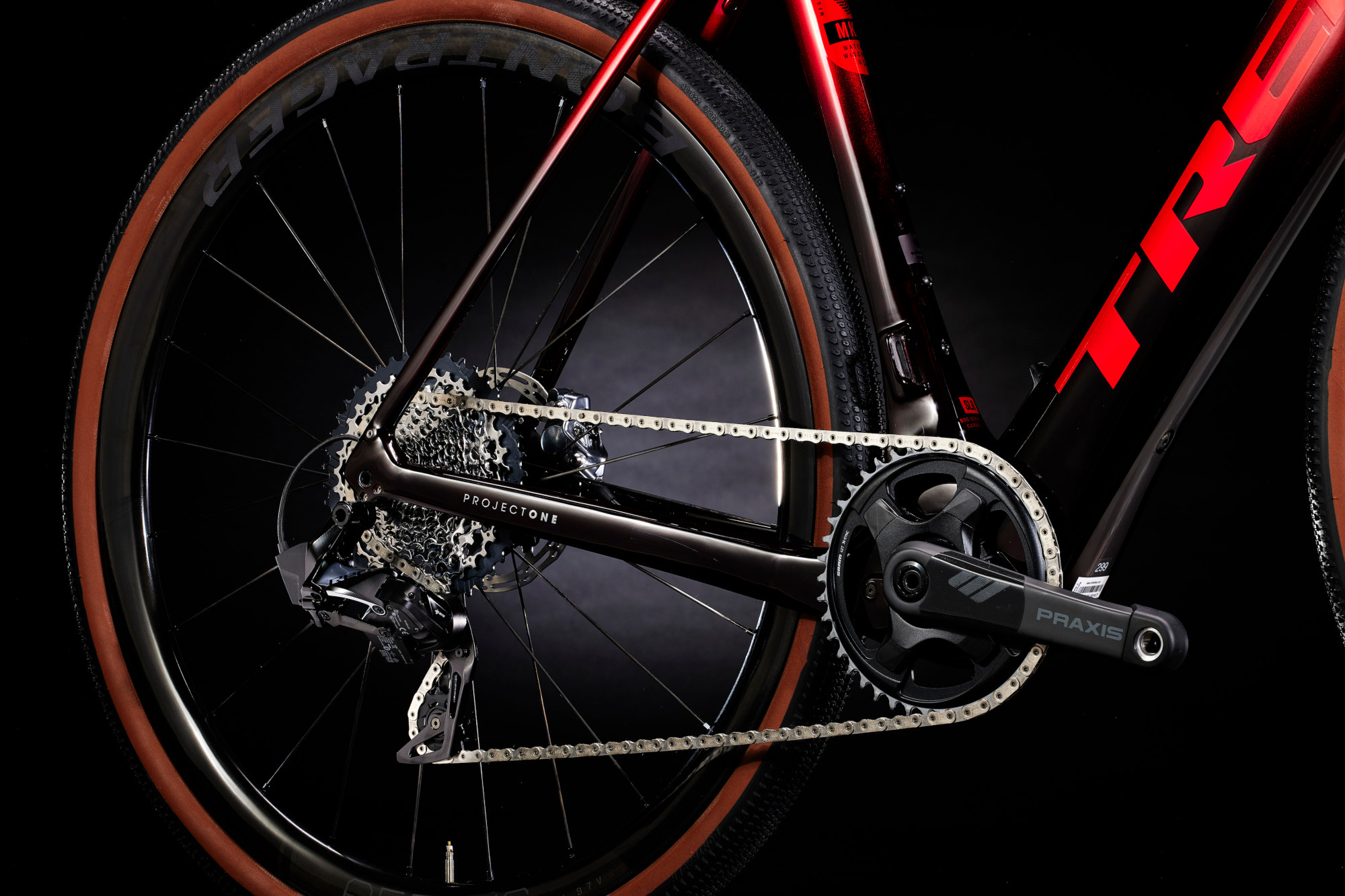
As for pricing, the SLR 6 costs £8,340/$8,999, while the SLR 6 eTap costs £8,890/$8,999. The SLR 7 costs £8,900/$9,499 and the SLR 7 eTap £9,450/$9,999. Finally the flagship SLR 9 is priced at £12,500/$12,999 and the SLR 9 eTap £12,900/$12,999.
For more information visit trek.com

Thank you for reading 20 articles this month* Join now for unlimited access
Enjoy your first month for just £1 / $1 / €1
*Read 5 free articles per month without a subscription

Join now for unlimited access
Try first month for just £1 / $1 / €1
Get The Leadout Newsletter
The latest race content, interviews, features, reviews and expert buying guides, direct to your inbox!
Luke Friend has worked as a writer, editor and copywriter for twenty five years. Across books, magazines and websites, he's covered a broad range of topics for a range of clients including Major League Baseball, the National Trust and the NHS. He has an MA in Professional Writing from Falmouth University and is a qualified bicycle mechanic. He has been a cycling enthusiast from an early age, partly due to watching the Tour de France on TV. He's a keen follower of bike racing to this day as well as a regular road and gravel rider.
-
 Cycling's riders need more protection from mindless 'fans' at races to avoid another Mathieu van der Poel Paris-Roubaix bottle incident
Cycling's riders need more protection from mindless 'fans' at races to avoid another Mathieu van der Poel Paris-Roubaix bottle incidentCycling's authorities must do everything within their power to prevent spectators from assaulting riders
By Tom Thewlis Published
-
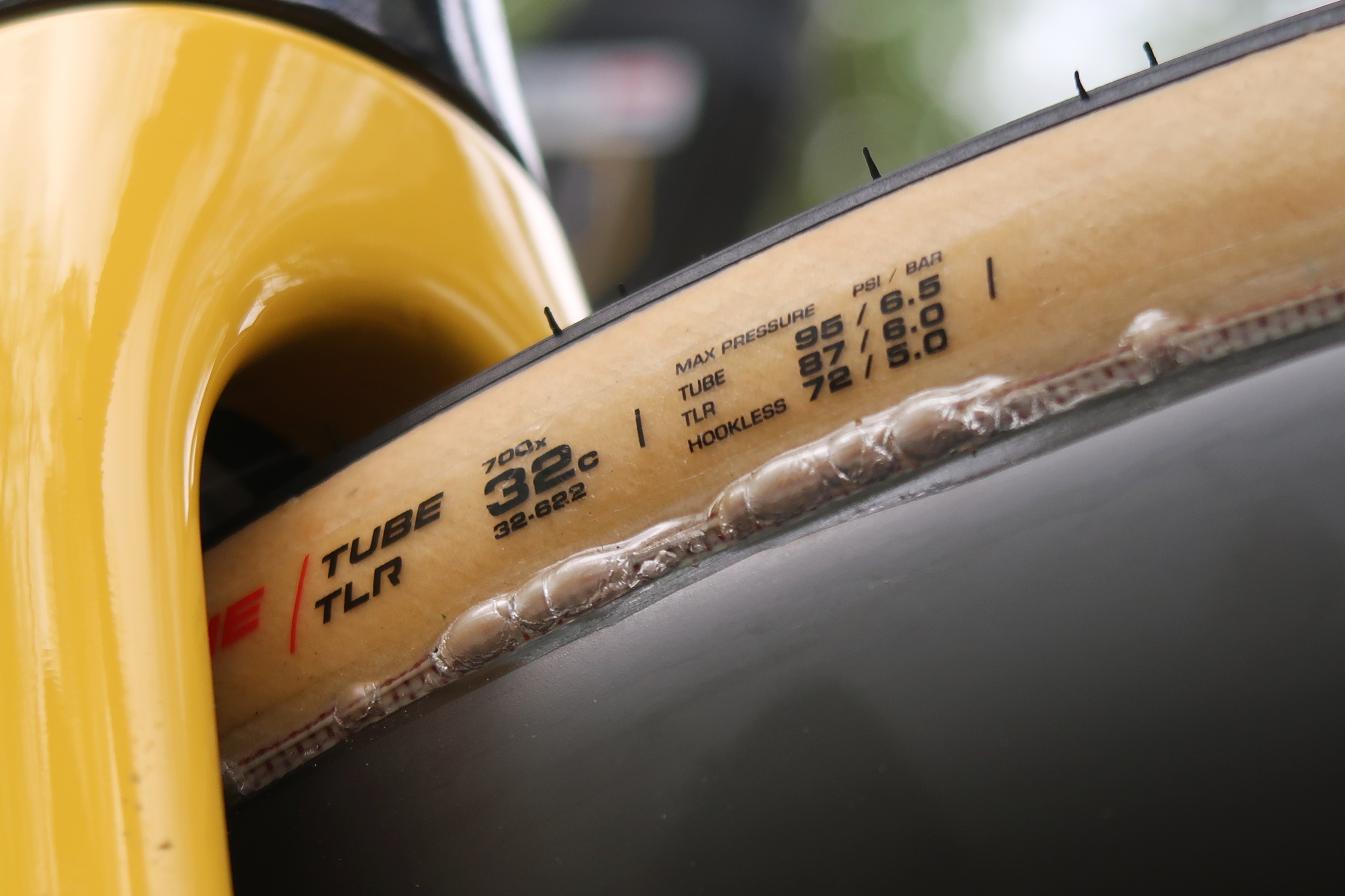 Why Paris-Roubaix 2025 is proof that road bike tyres still have a long way to go
Why Paris-Roubaix 2025 is proof that road bike tyres still have a long way to goParis-Roubaix bike tech could have wide implications for the many - here's why
By Joe Baker Published